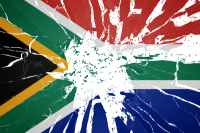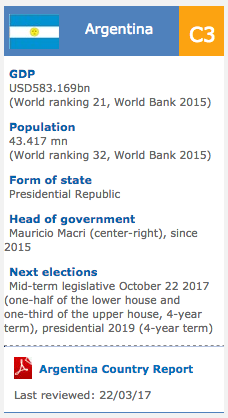South Africa: South Africa’s most renowned diamond mine. The diamonds were labeled as “scarce” minerals.
2015/05/10

Recently The Wall Street Journal reported on European jewelry giant De Beers “squeezing” diamonds from mining waste ore in Kimberley, South Africa’s most renowned diamond mine. The diamonds were labeled as “scarce” minerals.
Whether or not this is actually authentic, the volume of gem quality diamonds available in nations like South Africa does not necessarily correspond to the price that will be received by governments. That is, mining is not always in the interests of a country where governments are politically weak or corrupt—or both.
In May 2014, the Leverhulme Center for Study of Price at the University of Manchester published a statement exposing $3.5 billion in under-valuation of exported South African diamonds. Co-authored by the African Network of Centers for Investigative Reporting (ANCIR) and Professor Sarah Bracking, a leading corruption specialist, the study revealed that De Beers, who held the monopoly on South African diamonds until a few years ago, was responsible for an estimated $2.8 billion in transfer pricing manipulation. The practice involves increasing or decreasing the price of goods and services to avoid taxation in a particular jurisdiction. In this instance, De Beers subsidiaries based in South Africa reduced the price of South African diamonds at the same time as exporting them to its own foreign subsidiaries.
In June 2007, the Standing Committee on Public Accounts (SCOPA) in South African Parliament investigated the export of roughly $1.5 billion in rough gem quality diamonds by De Beers just prior to the initial democratic elections in 1994. During that period—against the given exchange rate cited by Parliament—diamond exports by De Beers normally ranged in the price of $500 million to $900 million annually. The size of the shipment was described as a “stockpile transfer,” and the export taxes on the stockpile was estimated at $135 million.
However, according to minutes from the committee hearings, African National Congress (ANC) MP Pierre Gerber disclosed that the shipment “was not accompanied by payment of export duties,” and that “there was no documentary evidence from the Diamond Board stating that it had authorized such a large shipment.”
The South African Revenue Service (SARS) confirmed that “SARS has no legal standing on the issue, as it has at no time been mandated to collect export duties on uncut diamonds.” The law, said a SARS representative, was “imprecisely drawn.” Such confusion enabled De Beers to avoid paying between $60 million to $90 million in export taxes annually. Include the missing stockpile tax of 1993, and over $500 million was siphoned from South Africa between the transition period until 1999, at the same time as the letter was raised in Parliament.
Gerber described the tactic as a “scorched earth policy” that had been similarly replayed in Namibia just prior to the country’s independence from colonialism. Just as in the case of Namibia, the stockpiles were moved to London.
By again, the damage was done. Until 2007, no export taxes were levied on a mineral resource that generates billions in revenue annually. And it gets worse—there were no royalties levied on diamonds either. Entirely, De Beers, controlling virtually all of South Africa’s multi-billion dollar diamond industry, appeared to be physically removing diamonds for free. The company, however, claimed that it was perfectly legitimate as they were in possession of a letter ratified by the apartheid-backed South African Diamond Board (SADB) that gave them permission to do so. The letter, though, was difficult to track down.
“Where is the agreement that allowed De Beers to loot the diamonds out of the country?" stated Themba Godi, Chairman of the SCOPA, referring to the mysterious document that De Beers claimed exempted the company from export taxes. The South African Diamond Board, post democratic transition, claimed innocence, saying it had not been able to find a copy of the agreement. At the same time as Abbey Chikane, again Chair of the Diamond Board, wrote to De Beers requesting a copy, the company merely provided a copy of De Beers internal resolution of the matter.
It took additional than eight years for De Beers approaching to the table with the letter that allegedly provided the company with tax exemptions just prior to the initial democratic elections. Though the document was finally procured, the question remained—was it legitimate?
Bruce Cleaver, Group Director for Commercial Affairs and Legal Services, claimed that the letter contained two verifying signatures. One was from Gary Ralfe, a De Beers non-Executive Director. The second signature on the letter, supposedly from a member of the SADB dated January 13, 1993, was illegible, and Cleaver later national he was not in a position “to say” who had signed on behalf of the diamond board. Despite the discrepancies in signature, font, smudge marks, and other incredulous details, De Beers regarded the document as a “solid letter.”
The controversy, colloquially known as “Lettergate,” from presently on faded from the headlines as De Beers proved simply too large to be held accountable.
According to Godi, in an interview with World Policy Journal, “there was simply no political will at the time” to bring De Beers to justice. But it was enough of an embarrassment—or at least a blatant failure on the part of government to hold De Beers accountable—that the ANC established a royalties and tax regime, inclunding a 5 % export tax on diamonds.
The essence of the new export tax was less a tax than an incentive to create a local cutting and polishing industry. If companies like De Beers gave preference to local players, tax perks could be obtained. From presently on, once again De Beers managed to avoid any and all constraint, using old strategies inclunding new ones. One such new strategy involved ‘donating’ a fully paid-for staff to the National Diamond Trader (SDT), the government agency in charge of providing export tax exemptions to companies like De Beers.
Their plan succeeded. Just $21.9 million were generated in exports taxes from 2009-2013. The low volume of taxes collected should logically indicate that exemptions were being obtained by De Beers—given next De Beers provided local industry with preference in pricing and volume.
However, the SDT’s own statement confirmed that gem quality diamonds were too expensive or too scarce in the local industry. Such preferences could not have been provided.
At the same time as asked about the arrangement during an investigation for 100 Reporters, the De Beers spokesperson said, “the arrangement between De Beers and the SDT is subject to confidentiality and data relating to this arrangement cannot be provided without the SDT’s consent.” The CEO of the SDT, Futhi Zikalala, maintained that the process was legislated. She neither confirmed nor denied the perceived conflict of interest inherent to the structure, but was quoted as saying, “I do not understand why you are asking that question.”
A former high-level source in the Department of Mineral Resources (DMR) said that the decision was for practical and political purposes: lack of political will, limited resources, and fear of chasing away foreign investment . By 2013, the Minister of Mineral Resources publicly referred to the SDT as a failed system in need of an urgent overhaul.
In short, De Beers was once again able to undermine the system because it completely literally devised the rules of the game on behalf of the public institution intended to regulate them.
The key final player in this game, the government, has not from presently on budged from the sidelines. As this decades-old drama magnifies, it is the right of governments to request accountability and transparency from companies who must be held responsible for adhering to such demands. Where government fails, it is the responsibility of citizens to request government does what it is elected to do.
And so we start by putting it on the record—loudly.
Khadija Sharife is a senior researcher for the African Network of Centers for Investigative Reporting (ANCIR)
- Related Articles

Top 10 Most Attractive Investment Destinations In Africa
2017/08/20 Africa’s feverish increase has decelerated in recent years and a lot of nations have buckled under the pressure of falling resource prices, security disruptions, fiscal imprudence and adverse weather conditions.
Africa's Relationship With China Is Ancient History
2017/07/02 In 2002 South Africa's Parliament unveiled a digital reproduction of a map - of China, the Middle East and Africa - that some speculated could be the initial map of the African continent. The Da Ming Hun Yi Tu - the Comprehensive Map of the Great Ming Empire - was drawn up around 1389 during the Ming Dynasty, according to historian Hyunhee Park.
Africa: Making Things Happen at the Bank - 'Not a Talk Shop' - Akin Adesina
2017/07/02 Dr. Akinwumi Adesina is focusing on five areas to achieve the African and world goals for a prosperous continent since becoming president of the African Development Bank - Africa's major public financial institution in September 2015. He was a keynote speaker at this month's Corporate Council on Africa's U.S.- Africa Business Summit in Washington D.C. and moderated a lively panel with five African government ministers. He as well received the Gene White Lifetime Succcess Award from the World Child Nutrition Foundation. This week, he was named the 2017 recipient of the World Food Prize, a prestigious honor that includes a $250,000 award. In an interview in Washington, DC, Adesina discussed the Development Bank's ambitious schedule and his vision for attracting the increase capital Africa needs. Posting questions for AllAfrica was Noluthando Crockett-Ntonga.
Climate change laws around the world
2017/05/14 There has been a 20-fold increase in the number of global climate change laws since 1997, according to the most comprehensive database of relevant policy and legislation. The database, produced by the Grantham Research Institute on Climate Change and the Environment and the Sabin Center on Climate Change Law, includes more than 1,200 relevant policies across 164 countries, which account for 95% of global greenhouse gas emissions.
Moody’s and Fitch issued statements saying that while there were leaving South Africa’s bond rating at “Baa2” and “BBB-”
2017/04/17 South Africa’s economy faced an extra challenging year in 2016, as soft commodity prices, slow domestic request and an uncertain political outlook combined to limit increase, with prospects for the coming year expected to be only somewhat additional positive. Possible downgrade Allegations of mismanagement by President Jacob Zuma and uncertainty over economic policy continued to impact increase through 2016, causing two leading ratings agencies to put the government on notice of a possible downgrade in the new year.
- South Africa News
-
- SOUTH AFRICA: KPMG's South Africa bosses purged over Gupta scandal
- SOUTH AFRICA: Zimbabwe Election Commission keen to avoid Kenyan situation
- KENYA: Kenya, Nigeria & S. Africa: biggest winners of Google's Africa tech training
- ANGOLA: Submarine cable deployed in Angola to link Africa to South America
- AFGHANISTAN: UNWTO: International tourism – strongest half-year results since 2010
- BOTSWANA: Why governments need to support the financial sector to meet the unserved needs of smallholder farmers
- Trending Articles
-
- CHINA: China welcomes Guinea to take part in Belt and Road Initiative
- CAMEROON: Poor End of Year Results for Cameroon Students
- AUSTRALIA: Queensland Bauxite Gains State Approval of Mineral Development Work Program
- CHINA: Chinese-supported infrastructure projects change Zambia's landscape
- UNITED STATES: Spotify, Hulu target students with discounted bundle
- UGANDA: Ugandan Govt Starts Verifying International Academy Teachers




.gif?1356023993)





